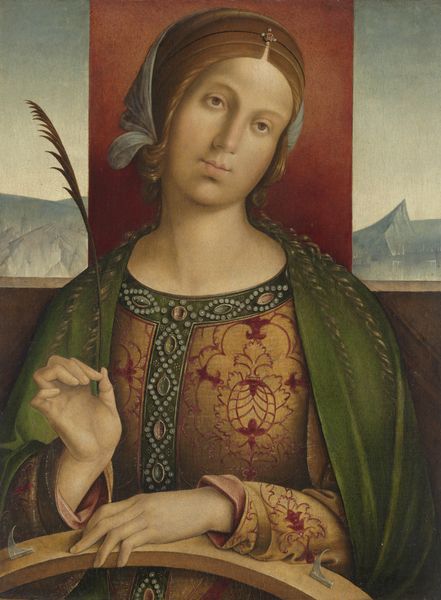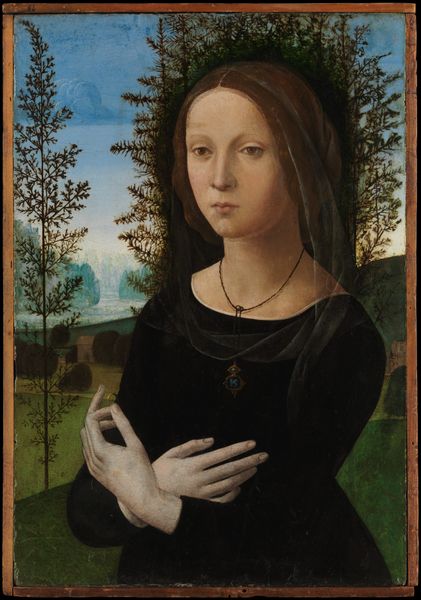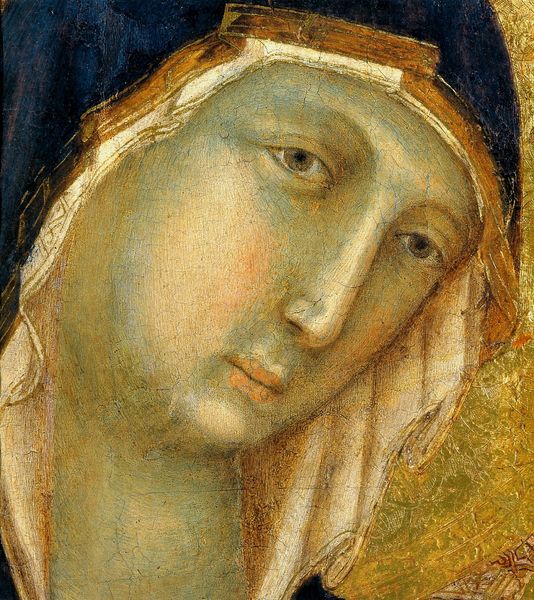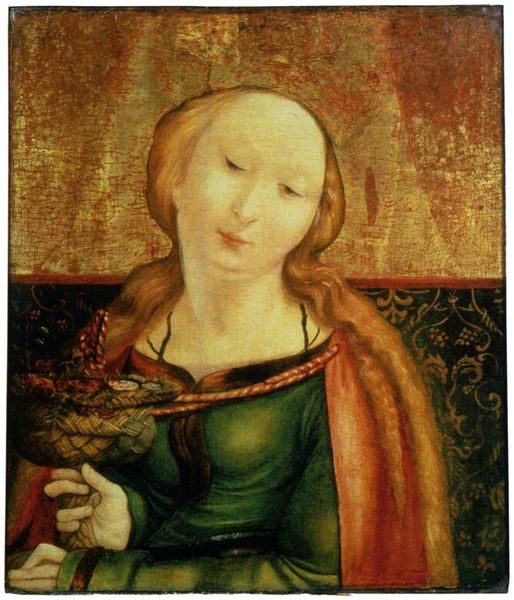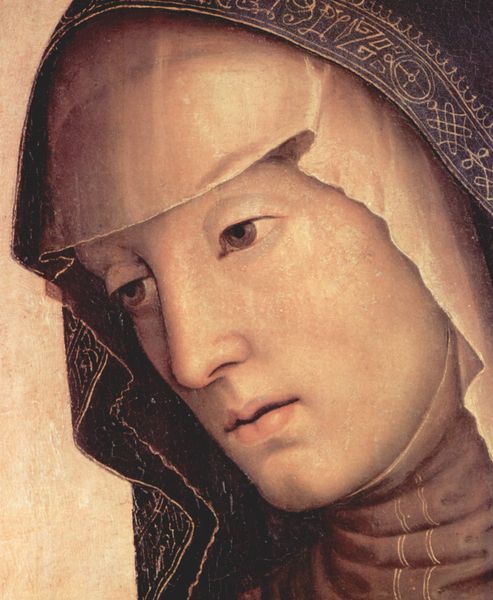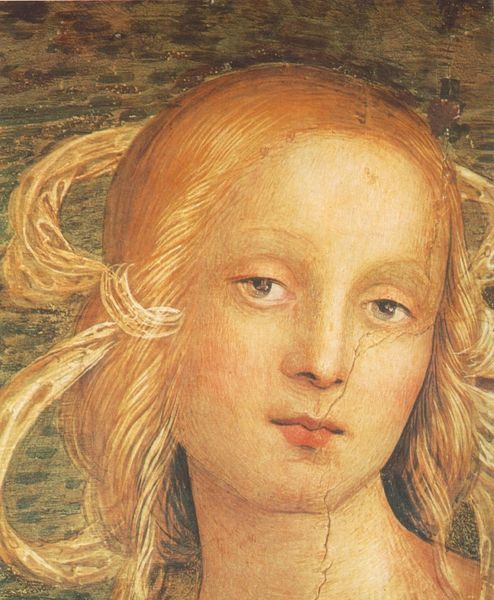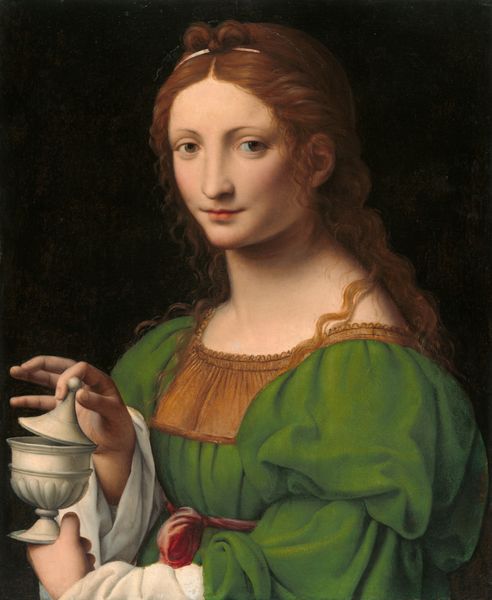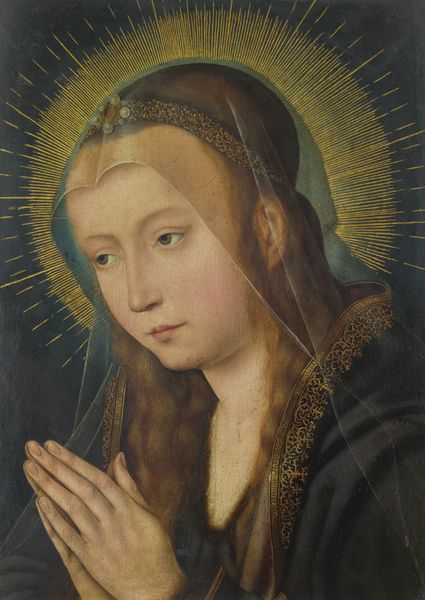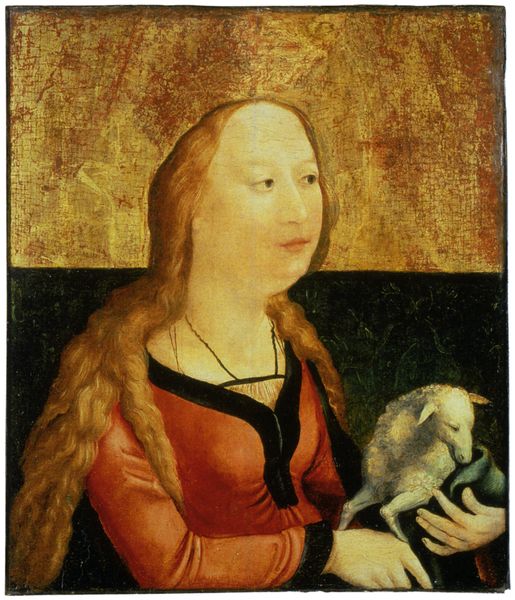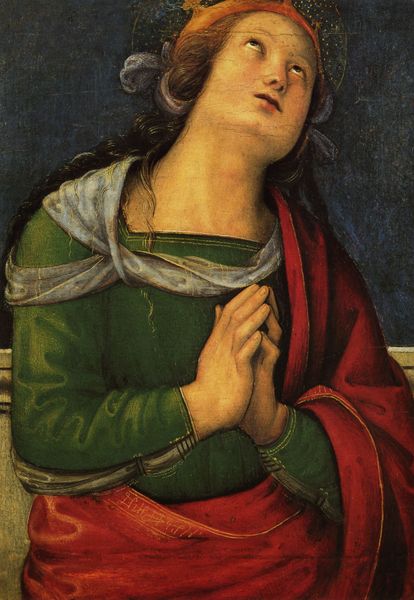
oil-paint, oil
#
portrait
#
oil-paint
#
oil
#
landscape
#
11_renaissance
#
oil painting
#
13_16th-century
#
history-painting
#
italian-renaissance
#
portrait art
Dimensions: 39.7 x 35.3 x 2.0 cm
Copyright: Public Domain
Altobello Meloni painted Narcissus at the Fountain at an unknown date in oil on panel, and it now resides in the Städel Museum. The panel presents a figure gazing downward, framed by a verdant wreath and long blonde hair, set against a detailed landscape. The composition is immediately striking, a study in contrasts between the dark, dense foliage on the left and the delicate, airy vista to the right, creating a semiotic division between introspection and the external world. The figure's gaze, directed downward, invites reflection on the nature of self-regard. Meloni's use of light, which selectively illuminates the figure while leaving the surroundings partially obscured, emphasizes the dichotomy between self and other. In this context, we can consider structuralist interpretations of myth, where Narcissus's tale is not merely about vanity, but about the perils of a self-contained system, blind to external reality. The subtle formal elements - the gentle curve of the figure's neck, the soft gradations of colour in the landscape - all contribute to a sense of quiet melancholy. It functions aesthetically and provides a cultural insight into Renaissance concerns about identity and perception. This reflects the way interpretations in art are ongoing and evolving.
Comments
stadelmuseum about 2 years ago
⋮
This panel – much reduced in size through trimming – shows the beautiful Narcissus leaning over the edge of a fountain to gaze at his reflection. As Ovid recounts in his ‘Metamorphoses’, the young man fell so deeply in love with his unattainable image that he died of grief. So much of the picture was cut away that the subject matter became unrecognisable, and in the nineteenth century the overpainting of a few areas turned the androgynous youth into St Catherine with her wheel. These additions, which distorted the picture’s meaning, were removed only a few decades ago.
Join the conversation
Join millions of artists and users on Artera today and experience the ultimate creative platform.
